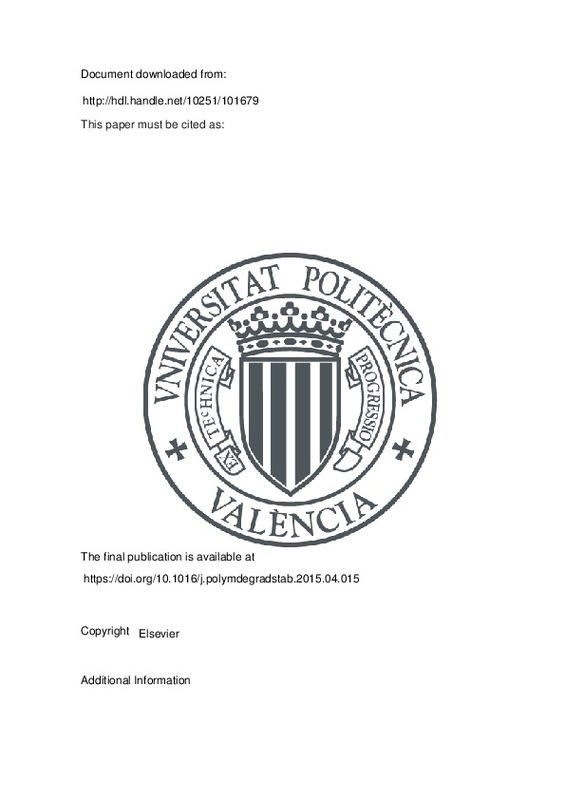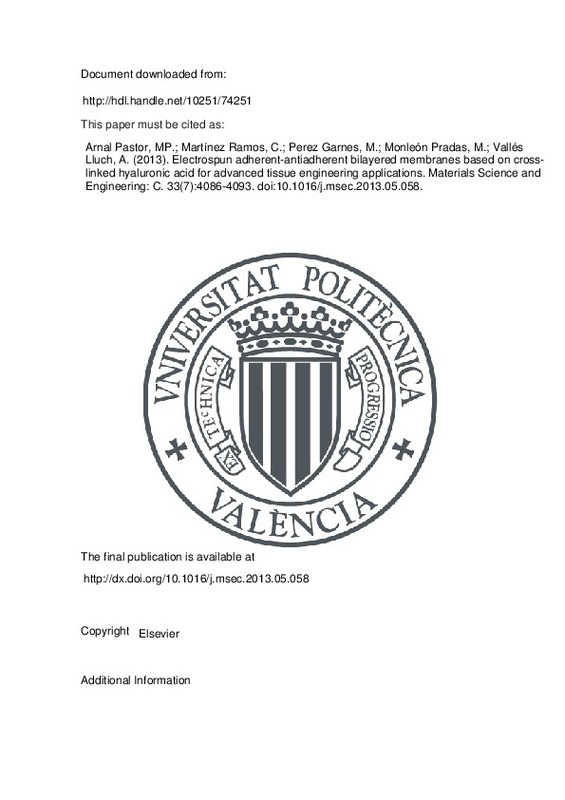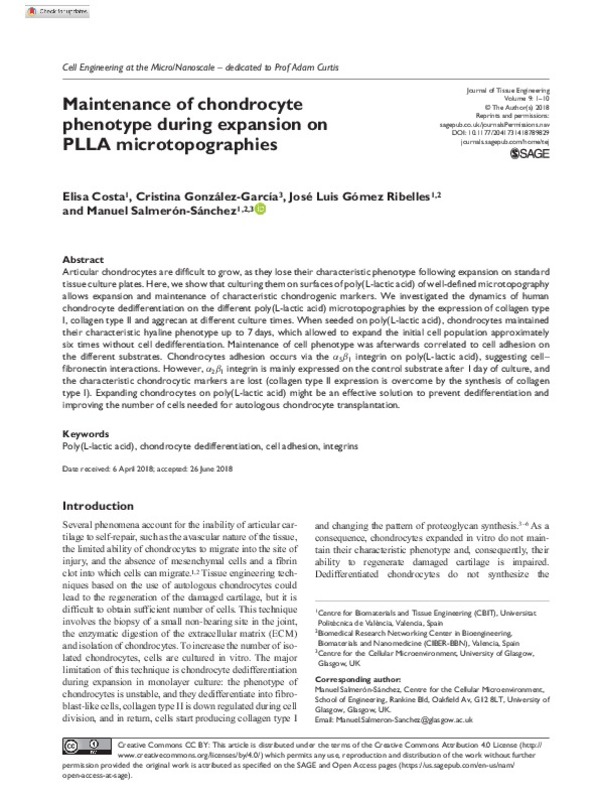

Listar por palabra clave "Poly(L-lactic acid)"
RiuNet: Repositorio Institucional de la Universidad Politécnica de Valencia
- RiuNet repositorio UPV
- :
- Listar por palabra clave
JavaScript is disabled for your browser. Some features of this site may not work without it.
Buscar en RiuNet
Listar
Mi cuenta
Ayuda RiuNet
Admin. UPV
Listar por palabra clave "Poly(L-lactic acid)"
Mostrando ítems 1-6 de 6
-
Ródenas Rochina, Joaquín; Vidaurre, Ana; Castilla Cortázar, María Isabel Cecilia; Lebourg ., Myriam Madeleine (Elsevier, 2015)[EN] Poly(L-lactic acid)(PLLA)/poly(epsilon-caprolactone)(PCL)/hydroxyapatite(HAp) composites appear as promising materials for healing large bone defects. Highly porous PLLA/PCL scaffolds, 80/20, 20/80 weight ratios, ...
-
Arnal Pastor, María Pilar; Martínez Ramos, Cristina; Perez Garnes, Manuel; Monleón Pradas, Manuel; Vallés Lluch, Ana (Elsevier, 2013-10-01)[EN] A procedure to obtain electrospun mats of hyaluronic acid (HA) stable in aqueous media in one single step has been developed. It consists in combining an HA solution with a divinyl sulfone one as cross-linker in a ...
-
Delmote, Josephine; Teruel-Biosca, Laura; Gómez Ribelles, José Luís; Gallego-Ferrer, Gloria (Elsevier, 2017)[EN] The aim of this study was to develop micro- or macro-porous substrates of poly(L-lactic acid) (PLLA) for the sustained release of water-soluble proteins. A model protein, bovine serum albumin (BSA), was incorporated ...
-
Gaona, Luis Andrés; Gómez Ribelles, José Luís; Perilla, Jairo Ernesto; Lebourg, Myriam Madeleine (Elsevier, 2012-09)Poly(L-lactic acid) Poly(e-caprolactone) blends (PLLA/PCL) porous membranes were prepared by freeze extraction (a modification of freeze drying) with ratios 100/0, 80/20, 60/40, 40/60, 20/80, 0/100 in weight. Degradation ...
-
POVEDA-REYES, SARA; Rodrigo Navarro, Aleixandre; Gamboa Martínez, Tatiana Carolina; Rodríguez-Cabello, José Carlos; Quintanilla-Sierra, Luis; Edlund, Ulrica; Gallego-Ferrer, Gloria (Elsevier, 2015-09-15)[EN] Poly(L-lactic acid) (PLLA) microfibers were surface functionalized by graft photopolymerization of 2-hydroxyethyl methacrylate (HEMA) onto the fiber surface. Grafted fibers were easily dispersed in enzymatically gelling ...
-
Costa Martínez, Elisa; González García, Cristina; Gómez Ribelles, José Luís; Salmerón Sánchez, Manuel (SAGE Publications, 2018-08-06)[EN] Articular chondrocytes are difficult to grow, as they lose their characteristic phenotype following expansion on standard tissue culture plates. Here, we show that culturing them on surfaces of poly(L-lactic acid) of ...
Mostrando ítems 1-6 de 6

Universitat Politècnica de València. Unidad de Documentación Científica de la Biblioteca (+34) 96 387 70 85 · RiuNet@bib.upv.es






